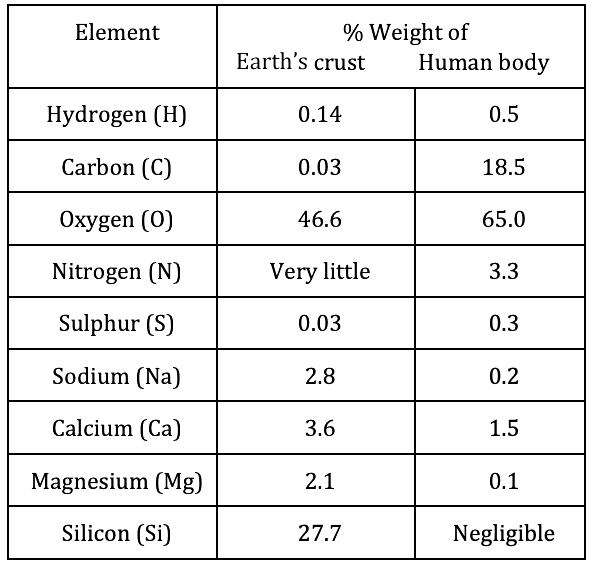KCET 2020 Biology Paper
The Karnataka Common Entrance Test (KCET) is a significant examination for students aspiring to pursue undergraduate courses in Karnataka. Among its various sections, the Biology paper holds paramount importance for medical and related fields. Let’s delve into the details of the KCET 2020 Biology paper to understand its nuances and prepare effectively.
Overview of KCET 2020 Biology Paper
The KCET 2020 Biology paper consisted of [X] questions, with a total duration of [Y] hours. This section carries a weightage of [Z]% in the overall examination. The format primarily includes multiple-choice questions (MCQs) covering various topics from the Biology syllabus.
Detailed Analysis of Biology Paper
Key Topics Covered in the Paper
Some of the key topics covered in the KCET 2020 Biology paper include Genetics, Ecology, Cell Biology, Human Physiology, and Plant Morphology. Certain topics, such as Genetics and Ecology, were particularly emphasized, with a higher number of questions dedicated to them.
Solutions and Explanations
Detailed solutions and explanations for the KCET 2020 Biology paper are essential for better understanding and self-assessment. They provide insights into problem-solving techniques and help clarify concepts that may be ambiguous to students.
Chemistry paper 2024 Solved
Question 1: Injection of an antidote against a snakebite is an example of
- a. auto immunity
- b. innate immunity
- c. active immunity
- d. passive immunity
- Answer: (d)The ability of the body to fight against the pathogen is called immunity.The immunity which is developed after the direct exposure to the pathogen or antigen is called active immunity. In this immunity, a person’s own cells produce antibodies in response to infection.The immunity gained by an organism through vaccines or antidotes is known as passive immunity. In this type of immunity, there will be no exposure to the pathogen directly. Ready-made antibodies are directly injected into a person to protect the body against foreign agents such as the snake poison. Thus, injection of an antidote of a snake is an example of passive immunity.When the immune system recognizes the body cells as a foreign substance and attacks one’s own healthy body cells, such immunity is known as autoimmunity. The immunity that is present since the time of birth is called innate immunity. This type of immunity is inherited from the parents and protects the individual throughout his life.
Question 2: Certain tumours are called malignant, because
- a. they are not neoplastic
- b. they are confined to specific locations
- c. they invade and damage surrounding tissues
- d. they show contact inhibition
Solution:
Answer: (c)
The uncontrolled growth of cells is called tumour or neoplasm. Tumours are considered to be either malignant or benign. Those tumours that are stagnant at one part of the body and do not spread are called benign tumours. But certain tumours invade and damage the surrounding tissues. Such tumours are known as malignant tumours. Only malignant tumours are properly designated as cancerous. Normal cells show a property called contact inhibition. Due to this property, when they are in contact with other cells the cell proliferation ceases. Cancer cells do not show the property of contact inhibition. A phenomenon in which the cancerous cells spread to distant sites in the body is called metastasis.
Question 3: The transport of which neurotransmitter is interfered by cocaine?
- a. Dopamine
- b. Acetylcholine
- c. Serotonin
- d. GABA
Solution:
Answer: (a)
Dopamine, serotonin, acetylcholine and GABA (gamma-aminobutyric acid) are various types of neurotransmitters which are present in the synaptic knob of the neurons.
Cocaine interferes with the transport of the neurotransmitter dopamine. Cocaine attaches to the dopamine transporter, the molecular channel that takes up free-floating dopamine from the synapse back into the sending neuron. As long as cocaine occupies the transporter, dopamine cannot re-enter the neuron. The concentration of dopamine hence builds up synapse, stimulating receiving-neuron receptors more and producing much greater dopamine impact on the receiving neurons than what occurs naturally. This causes a stimulating action on CNS, producing a sense of euphoria and increased energy. An excessive dosage of cocaine causes hallucinations.
Question 4: In the life cycle of Plasmodium, fertilisation takes place in
- a. liver cells
- b. salivary glands of mosquito
- c. RBCs of humans
- d. stomach of mosquito
Solution:
Answer: (d)

The malarial parasite (Plasmodium) undergoes its life cycle in two different host organisms – female Anopheles mosquito and human. The sexual stage of its life cycle occurs in the female Anopheles mosquito, and asexual stage occurs in the human body. When a female Anopheles mosquito bites a healthy person, the malarial parasite (in its infective sporozoite stage) is injected into his blood.
The sporozoites are present in the salivary glands of the mosquito, enter the blood of the human and travel to the liver. In the liver, the sporozoites multiply asexually and form schizonts. These schizonts infect the RBC and multiply further to form the merozoites. The merozoites give rise to the male and female gametocytes. When a female Anopheles mosquito bites this individual, it takes up the gametocytes with the blood. In the stomach of the mosquito, the fertilization of these gametes occurs.
The mature infective stages called sporozoites then develop and migrate to the salivary glands of the mosquito. When this mosquito bites a healthy human again, the sporozoites are introduced into the human body, and the cycle continues.
Question 5: White rust-resistant variety of Brassica is
- a. Pusa Komal
- b. Pusa Sadabahar
- c. Pusa Swarnim
- d. Pusa Shubhra
Solution:
Answer: (c)
The table given below gives the varieties of crops which are resistant to some diseases:
Crop
Variety
Resistance to diseases
Wheat
Himgirl
Leaf and stripe rust, hill bunt
Brassica
Pusa swarnim (Karan rai)
White rust
Cauliflower
Pusa shubhra, Pusa Snowball K-1
Black rot and Curl blight black rot
Cowpea
Pusa Komal
Bacterial blight
Chilli
Pusa Sadabahar
Chilly mosaic virus, Tobacco mosaic virus and Leaf curl
Question 6: Which of the following plant tissues cannot be used as explant in tissue culture?
- a. Collenchyma
- b. Meristem
- c. Parenchyma
- d. Sclerenchyma
Solution:
Answer: (d)
An explant is a piece of plant tissue or part which is used in tissue culture for regeneration. It is used to grow a new plant in a cultured medium. Meristem, collenchyma and parenchyma are made up of living cells. Thus they can be used as explants. Whereas sclerenchyma is made up of dead cells, thus it cannot be used as an explant.
Question 7: The hybridisation between naturally incompatible plants like potato and tomato can be achieved through
- a. mutation breeding
- b. artificial pollination
- c. somatic hybridisation
- d. conventional breeding
Solution:
Answer: (c)
Mutation breeding refers to the process by which the seed is exposed to radiation or chemicals in order to develop an improved mutant variant. It can help to improve individual plants’ yield and resistance properties.
Conventional breeding is the development of new varieties (cultivars) of plants by using natural processes and traditional methods such as selection and breeding of high yielding varieties. Since potato and tomato belong to two different species and thus cannot be hybridized by conventional breeding methods.
A pollination technique in which the desired pollen grains are used for pollination by artificial means is known as artificial pollination. Since potato and tomato are incompatible, even artificial pollination cannot be used as the pollen grains will not germinate to form the pollen tube on incompatible species.
The fusion of the protoplasm of two different plant cells in order to produce a hybrid variety is called somatic hybridization. The protoplasts of two plants can be made to fuse with a chemical called Polyethylene glycol (PEG). Thus, somatic hybridization would be the best suitable method in developing the hybridized variety between potato and tomato.
Question 8: A chilly plant was severely infected with Chilly Mosaic Virus (CMV). Identify the technique that helps to raise virus-free plants in the next generation from the above virus-infected plant.
- a. Hydroponics
- b. Artificial hybridisation
- c. Meristem culture
- d. Self-pollination
Solution:
Answer: (c)
The cells which have the ability to divide and result in the growth of the plant are called meristem. The meristem is free from the virus even though the plant is infected with a virus. This is because the division of meristematic cells is faster than the rate of replication of the virus, less differentiation of meristematic cells, etc. Thus to develop a virus-free plant, culturing the meristem would be a suitable option.
Cultivation of plants without soil and just by the use of nutrient-rich water is called hydroponics.
Transfer of pollen grains from the anther to the stigma of the same flower or different flowers of the same plant is called self-pollination.
A hybridization technique in which the desired pollen grains are used for pollination by artificial means is called artificial hybridization.
Question 9: In sewage treatment, secondary treatment is considered highly significant, because
- a. it increases the organic content of sewage
- b. it helps to remove debris from the sewage
- c. it reduces the BOD level of sewage
- d. it helps in the production of biogas
Solution:
Answer: (c)
The primary stage of the sewage treatment includes the removal of floating wastes. This process is done mechanically and does not involve any living organisms. Whereas the secondary stage is also known as the biological stage and uses the microorganisms in order to break down the organic matter and decrease the biochemical oxygen demand (BOD) level of the sewage.
BOD refers to the amount of the oxygen that would be consumed if all the organic matter in one litre of water were oxidized by bacteria. If the BOD level is high, the water is said to be polluted. Thus, before the deposition of the sewage water into the water bodies, the BOD level has to be reduced. Biological treatment ensures that the deposition of the sewage water into the water body does not pollute the water body by reducing the BOD of the sewage water.
- a. methanogens are absent in human gut
- b. methanogens are present in human gut
- c. cellulose is a complex sugar
- d. cellulose reduces the bulk of food
Solution:
Answer: (a)
Methanogens are bacteria that produce methane during the breaking down of substrates like cellulose. Plants are the major food consumed by ruminant animals. Cellulose is a polymer of glucose found in the cell wall of plants. The gut of the ruminant animals have methanogens that help in the digestion of cellulose and produce methane. Methanogens are absent in the case of human beings. Because of this reason, humans are unable to digest cellulose.
Question 11: From the given combinations of steps in PCR, identify the enzyme-dependent step.
- a. Extension only
- b. Annealing and extension
- c. Annealing and denaturation
- d. Denaturation and extension
Solution:
Answer: (a)
Question 12: Biolistics method is suitable for gene transfer into _________.
- a. plant cells
- b. viruses
- c. animal cells
- d. Bacteria
Solution:
Answer: (a)
During the transfer of genes in rDNA technology, the gene which is modified has to be taken up by the host cells. Many methods are used to transfer the modified genes into the host cell. One such method is the biolistic or gene gun method, which is suitable for plant cells. In this method, tiny metal balls (like micro-particles of gold or tungsten) coated with the recombinant gene are propelled into the plant cell at high velocity.
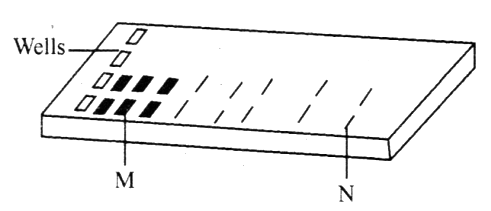
- a. M – Smallest DNA bands, N – Largest DNA bands
- b. M – Digested DNA bands, N – Undigested DNA bands
- c. M – Hybridised DNA bands, N – Unhybridised DNA bands
- d. M – Largest DNA bands, N – Smallest DNA bands
Solution:
Answer: (d)
The given diagram represents the gel electrophoresis technique. It is used to separate DNA fragments based on their sizes. The DNA fragments that have larger sizes travel a shorter distance than the smaller size DNA fragments from the wells under the influence of an electric field. Hence, ‘M’ represents the largest DNA bands since it has travelled a less distance from the well when compared to the distance travelled by the fragment ‘N’.
Question 14: In RNA interface, the dsRNA molecule prevents
- a. aminoacylation
- b. transcription of mRNA
- c. transport of RNA from the nucleus to cytoplasm
- d. translation of mRNA
Solution:
Answer: (d)
The translation is the process of synthesizing polypeptides by polymerization of amino acids from information contained in mRNA. During translation, the adapter molecules called tRNA are complexed with amino acids (aminoacylation). The tRNAs carry the amino acids to the site of protein synthesis. The mRNA molecules are also transported to the site of protein synthesis (ribosomes) through a highly organized enzyme-mediated process.
RNA interference is a process by which a complementary double-stranded RNA is formed in order to silence an mRNA. This prevents the mRNA from further translating into protein as double-stranded RNA molecules cannot be translated.
Question 15: Nowadays, the early diagnosis of bacterial or viral infection in humans is possible using
- a. CT Scan
- b. Serum analyser
- c. DNA sequencer
- d. PCR
Solution:
Answer: (d)
PCR (polymerase chain reaction) is a technique that helps in the amplification of DNA. A small amount of DNA can be amplified by PCR. The pathogens that are difficult to culture in-vitro or require a long time to culture can be easily traced with this technique. So, this method helps in the early diagnosis of bacterial or viral infections in humans.
A serum analyzer is used to analyze the components of the blood serum. Generally, these tests are not as accurate as PCR and may not give early diagnostic results.
CT scan (computed tomography scan) is a medical imaging procedure that uses a computer-processed technique to observe the cross-sectional images of a tissue or organ without cutting.
DNA sequencer is a scientific device used to sequence DNA.
Question 16: Which of the following features of plants is not helpful in adapting to desert life?
- a. Absence of trichomes on leaf surface
- b. Presence of thick cuticle on the leaf surface
- c. Leaves modified into spines
- d. Presence of sunken stomata
Solution:
Answer: (a)
Due to the less availability of water, the desert plants have modified themselves in order to prevent any water loss from its surface. The thick cuticle leaves modified as a spine and sunken stomata ensure that the rate of transpiration is reduced. Trichomes are tiny hair-like structures present on the epidermis. Their functions include defence against insects, protection from excessive transpiration and high heat. Some trichomes modify to function as glands to secrete essential oils and resins. Hence, their absence is not helpful in adapting to desert life.
Question 17: In the following equation of Verhulst-Pearl logistic growth, the letter ‘r’ denotes
- a. population density
- b. extrinsic rate of natural increase
- c. intrinsic rate of natural increase
- d. carrying capacity
Solution:
Answer: (c)
Verhulst-Pearl logistic growth is expressed by:
where N = population density at time t
K = the maximum number of organisms that can be supported by a habitat without environmental degradation is called carrying capacity
r = the number of birth rates minus the number of death rates in a population is called the intrinsic rate of natural increase.
Question 18: The shape of the pyramids reflects the growth status of the population. Identify the type of age pyramid represented below for the human population.
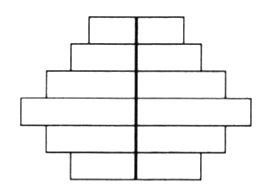
- a. Declining
- b. Ascending
- c. Expanding
- d. Stable
Solution:
Answer: (a)
Question 19: Identify the possible link ‘M’ in the following food chain:
Plant → Insect →[M]→ Snake → Eagle
- a. Ichthyophis
- b. Rabbit
- c. Wolf
- d. Frog
Solution:
Answer: (d)
A primary consumer consumes the plant. Thus, insects are primary consumers since lots of insects feed on plant material. Frog is an example of secondary consumers since it feeds on insects and hence it should come after insect in the given food chain. Wolf and snakes are tertiary consumers. The secondary consumers are eaten by tertiary consumers. Thus, in the given food chain, the frog will eat insect and in turn, the frog will be eaten by the snake. Ichthyophis is a limbless amphibian which looks like a snake. Some species of Ichthyophis can feed on small snakes.
Question 20: The organisms which invade a bare area to initiate an ecological succession are known as
- a. pioneer species
- b. keystone species
- c. climatic species
- d. endemic species
Solution:
Answer: (a)
The organisms which invade a bare area to initiate an ecological succession are called pioneer species.
Those species that have a large impact over its environment compared to its abundance are called keystone species. Without the members of this keystone species, the ecosystem would either cease to exist or would become very different. Species that are limited or confined to a particular region and nowhere else in the world are called endemic species.
Question 21: Which one of the following is not included under in-situ conservation?
- a. Biosphere reserve
- b. National park
- c. Sanctuary
- d. Botanical garden
Solution:
Answer: (d)
Conservation of organisms in its natural habitat is called in-situ conservation. Biosphere reserves, national parks and sanctuaries are examples of in-situ conservation.
Ex-situ conservation is a type of conservation in which the threatened animals and plants are taken out from their natural habitat and placed in special settings where they can be protected and given special care. In a botanical garden, the plants grown are not grown in its natural habitat. Thus, it is an example of ex-situ conservation.
Question 22: Which one of the following is a wrong statement?
- a. Ozone in the upper part of the atmosphere is harmful to animals
- b. Most of the forests have been lost in tropical areas
- c. Greenhouse effect is a natural phenomenon
- d. Eutrophication is a natural phenomenon in freshwater lakes
Solution:
Answer: (a)
Ozone is present in the upper part of the atmosphere called the stratosphere. It is not harmful to animals. It acts as a shield absorbing ultraviolet radiation from the sun. Only the ozone present in the lower part of the atmosphere is harmful. Ozone can destroy certain plant tissues, cause haemorrhages, eye irritation, etc.
The greenhouse effect is a natural phenomenon which is responsible for the warming of Earth’s surface and atmosphere. But due to the exploitation of nature by humans like the deforestation in tropical areas, the greenhouse effect is aggravated.
Eutrophication is the natural ageing of a lake due to biological enrichment of its water. It can be fastened because of the activities of human beings.
- a. 10th December 2020
- b. 1st April 2020
- c. 1st June 2021
- d. 1st January, 2021
- Answer: There are a set of norms laid down by the government, which has to be followed by every automobile industry in order to control air pollution. The vehicles have to adhere to these norms. Currently, the vehicles that are being released in the market are Bharat Stage-VI (BS-VI) vehicles. This norm was effective from 1st April 2020.
| Column I | Column II |
| (p) Penicillium |
| (q) Alternaria |
| (r) Albugo |
| (s) Puccinia |
- a. (1) – (r), (2) – (p), (3) – (s), (4) – (q)
- b. (1) – (p), (2) – (s), (3) – (r), (4) – (q)
- c. (1) – (q), (2) – (p), (3) – (s), (4) – (r)
- d. (1) – (r), (2) – (p), (3) – (q), (4) – (s)
- Answer: (a)
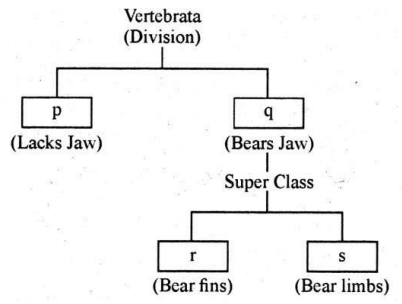
- a. p – Agnatha, q – Gnathostomata, r – Tetrapoda, s – Pisces
- b. p – Agnatha, q – Gnathostomata, r – Pisces, s – Tetrapoda
- c. p – Gnathostomata, q – Agnatha, r – Tetrapoda, s – Pisces
- d. p – Tetrapoda, q – Pisces, r – Gnathostomata, s – Agnatha
- Answer: (b)
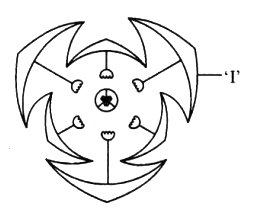
- a. Perianth
- b. Sepal
- c. Petal
- d. Tepal
Solution:
Answer: (d)
The parts of the flowers are represented using various shapes in a floral diagram. A floral diagram provides information about the number of parts of a flower, their arrangement and the relation they have with one another. Different parts of a flower-like calyx, corolla, androecium and gynoecium are drawn in successive whorls. The outer part of the flower, which consists of the corolla and calyx is called the perianth. Perianth refers to the condition when there is no distinction between sepals and petals. The individual parts of the perianth are known as tepals. Hence, the individual floral unit marked in the diagram is tepal.
Question 27: A student observes grass and Hibiscus plants in his garden during noon. To his surprise, only the leaves of grass were found rolled inwards. The reason could be
- a. due to a higher rate of transpiration
- b. presence of more number of stomata on the grass leaves
- c. undifferentiated mesophyll in grass leaves
- d. presence of bulliform cells in the grass leaves
Solution:
Answer: (d)
Question 28: In the below diagram, identify the part which connects the peripheral microtubules to the central sheath.
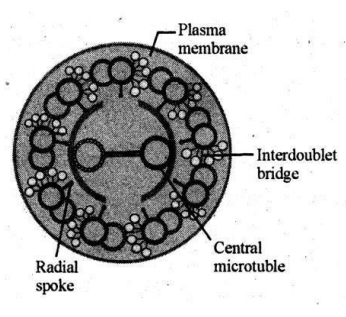
- a. Radial spok
- b. Plasma membrane
- c. Interdoublet bridge
- d. Central microtubule
Solution:
Answer: (a)
Question 29: The element whose percentage weight is highest in both Earth’s crust and the human body is
- a. calcium
- b. hydrogen
- c. carbon
- d. oxygen
Solution:
Answer: (d)
The following are the percentage of some elements in Earth’s crust and the human body:

Question 30: Identify the event in meiosis mediated by the enzyme recombinase.
- a. Interkinesis
- b. Synaptic pairing
- c. Terminalization
- d. Crossing Over
Solution:
Answer: (d)
Between the meiosis, I and meiosis II, the phase where the cell rests is called the interkinesis or interphase II.
During the prophase, I of meiosis I, the homologous chromosome crossover and recombination of genes occur. This process is facilitated by an enzyme called recombinase. This occurs in the pachytene stage of prophase I of meiosis I. Termination of chiasmata in the final stage of meiotic prophase I in which the displacement of chiasmata to the ends of chromosomes occurs. The chromosomes are fully condensed and the meiotic spindle is assembled to prepare the homologous chromosomes for separation.
Synapsis refers to the process of attachment or pairing of homologous chromosomes in the zygotene stage of prophase 1 of meiosis 1.
Question 31: The deficiency of which of these elements interrupts photolysis of water during photosynthesis?
- a. N and P
- b. Mn and Cl
- c. Zn and Cu
- d. Ca and K
Solution:
Answer: (b)
Mn and Cl are essential elements for the photolysis of water during photosynthesis. Ca is associated with the growth of the plant and is required by meristematic and differentiating tissues.
Potassium helps to maintain an anion-cation balance in cells and is involved in protein synthesis, opening and closing of stomata, activation of enzymes and in the maintenance of the turgidity of cells.
Zn and Cu are essential in maintaining the metabolism in plants. Zn activates various enzymes, especially carboxylases. It is also needed in the synthesis of auxins. Cu is involved in redox reactions.
N and P are important for the overall development of plants in crop production. They are major constituents of many biomolecules.
Question 32: In C4 plants, C3 cycle takes place in
- a. bundle sheath cells
- b. mesophyll cells
- c. bulliform cells
- d. companion cells
Solution:
Answer: (a)
Question 33: During the citric acid cycle, the various organic acid undergoes decarboxylation. Which of the following organic acids of the above cycle have 4C, 5C and 6C respectively?
- a. Pyruvic acid, α-ketogluetaric acid and citric acid
- b. Oxaloacetic acid, citric acid and succinic acid
- c. Succinic acid, α-ketoglutaric acid and citric acid
- d. Pyruvic acid, malic acid and α-ketoglutaric acid
Solution:
Answer: (c)
Question 34: Consider the following statements regarding photosynthesis and respiration in plants and select the correct option.
I. RuBisCO has a high affinity to oxygen in low CO2 concentration.
II. The Calvin pathway occurs in the chloroplast of bundle sheath cells of C4 plants.
III. Yeast poison themselves when the concentration of alcohol reaches 7%.
IV. Oxygen is a final hydrogen acceptor during aerobic respiration.
- a. Statements I & IV are correct, III is wrong
- b. Statements II & IV are correct, I is wrong
- c. Statements I & II are correct, IV is wrong
- d. Statements I & III are correct, II is wrong
Solution:
Answer: (a)
| Column I | Column II | ||
| (1) | Pancreas | (p) | Pepsin |
| (2) | Gastric glands | (q) | Enterokinase |
| (3) | Small intestine | (r) | Ptyalin |
| (4) | Salivary glands | (s) | Trypsin |
- a. (1) – (q), (2) – (s), (3) – (r), (4) – (p)
- b. (l) – (p), (2) – (q), (3) – (r), (4) – (s)
- c. (1) – (s), (2) – (p), (3) – (q), (4) – (r)
- d. (1) – (r), (2) – (q), (3) – (p), (4) – (s)
- Answer: (c)
Question 36: Match the different types of leucocytes (Column-I) with their percentage of occurrence (Column-II) in a healthy adult human and choose the correct answer.
Column I | Column II | ||
(1) | Neutrophils | (p) | 6 – 8 % |
(2) | Lymphocytes | (q) | 60 – 65 % |
(3) | Monocytes | (r) | 0.5 – 1% |
(4) | Basophils | (s) | 2 – 3 % |
(5) | Eosinophils | (t) | 20 – 25 % |
Choose the correct option:
- a. (1) – (q), (2) – (t), (3) (p), (4) – (r), (5) – (s)
- b. (1) – (q), (2) – (r), (3) – (s), (4) – (t), (5) – (p)
- c. (1) – (r), (2) – (s), (3) – (t), (4) – (q), (5) – (p)
- d. (1) – (q), (2) – (t), (3) – (r), (4) – (s), (5) – (p)
Solution:
Answer: (a)
The table given below shows the different types of leucocytes with their percentage of occurrence in a healthy adult human:
Column I
Column II
(1)
Neutrophils
(q)
60 – 65 %
(2)
Lymphocytes
(t)
20 – 25 %
(3)
Monocytes
(p)
6 – 8 %
(4)
Basophils
(r)
0.5 – 1%
(5)
Eosinophils
(s)
2 – 3 %
Question 37: In which part of the human brain corpora quadrigemina is located?
- a. Cerebral hemisphere
- b. Forebrain
- c. Hindbrain
- d. Midbrain
Solution:
Answer: (d)
The cerebrum is made up of two hemispheres called the cerebral hemispheres. The brain is divided into three parts – forebrain, midbrain and hindbrain.
Forebrain constitutes cerebrum, thalamus and hypothalamus.
Midbrain constitutes the corpora quadrigemina which contains reflex centres involving eye movements and auditory responses.
Hindbrain constitutes the pons, medulla and cerebellum.
- a. androgens
- b. melatonin
- c. estrogens
- d. Progesterone
Solution:
Answer: (c)
Estrogens are female sex hormone produced by the ovary. It acts on the stimulation of growth, activities of female secondary sex organs, development of growing ovarian follicles, the appearance of female secondary sex characters (e.g., the high pitch of voice, etc.) and mammary gland development. Estrogens also regulate female sexual behaviour.
Androgens are male sex hormones which are responsible for the secondary sexual characteristics in male.
Melatonin is a hormone released by the pineal gland. It regulates the circadian rhythms (variations following a 24-hour cycle) of our body.
Progesterone is a hormone released by the corpus luteum which is responsible for maintaining the pregnancy in human females.
- a. 51
- b. 34
- c. 68
- d. 17
Solution:
Answer: (a)
The apple plant is an angiosperm plant. The gametes are haploid cells and PEN in angiosperms is triploid. Thus, if the number of chromosomes in gametes is 17, then thrice the number is seen in PEN. Therefore, the number of chromosomes in the PEN is 17 X 3 = 51.
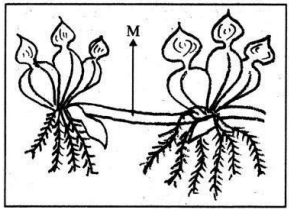
- a. Runner
- b. Bulbil
- c. Offset
- d. Rhizome
Solution:
Answer: (c)
The runner is a long thin stem that usually grows horizontally along the ground and produces roots and shoots at widely spaced nodes, as in Oxalis, Cynodon (lawn grass), etc.
Offsets are similar to runners. They are also horizontal stems on the ground and give rise to roots and vertical branches at the nodes. These are one internode long runners. The given diagram represents Eichhornia which is an example of an offset. Bulbil is a condensed axillary bud. It acts as a reproductive structure and helps in vegetative reproduction.
Bulbil is seen in Agave.
Rhizomes may be horizontal, oblique or upright stems that grow underground. The stem is differentiated into nodes and internodes. For example, Ginger.
Question 41: During an excavation of soil, pollen fossils were retrieved from the deepest layer of soil. The pollen grains remained as fossils because
- a. pollen grains are asexual reproductive structures
- b. the intine of pollen grains is made up of pectin
- c. exine has spiny ornamentation
- d. the exine of pollen grains is highly resistant to enzyme action
Solution:
Answer: (d)
The pollen grain consists of two layers – intine (inner layer) and exine (outer layer). The exine is covered by a chemically inert substance called sporopollenin which is one of the most resistant organic materials. Due to this, the pollen grains do not get destroyed by any external condition or enzymatic activity. So, pollen grains can remain as fossils.
Question 42: Identify the mismatch.
- a. Primary Endosperm Nucleus – Triploid
- b. Antipodal – Haploid
- c. Zygote – Diploid
- d. Synergids – Diploid
Solution:
Answer: (d)
The nucleus formed by the fusion of a male gamete and two nuclei of the central cell is called the primary endosperm nucleus (PEN). This process is known as triple fusion. Therefore, the primary endosperm nucleus is triploid.
A zygote is formed by the fusion of haploid male and female gamete. Thus, it will be diploid.
During the embryo sac formation, the haploid cells form the antipodal cells and synergids. Thus, the pair that is mismatched is an option (d).
Question 43: Identify the correct order of events in pollen-pistil interaction from the options given below:
I. Release of male gametes into the embryo sac.
II. Deposition of pollen grains on stigma.
III. Entry of pollen tube into the embryo sac.
IV. Development of pollen tube
V. Entry of pollen tube into the ovule
- a. V → IV → III → II → I
- b. IV → III → II → I → V<.p> c. II → IV → V → III → I
- d. II → IV → III → V→ I
Solution:
Answer: (c)
Transfer of pollen grains from the anther to the stigma is called pollination. Once the pollen grains are deposited on the stigma, the vegetative cell gives rise to the pollen tube. The pollen tube then enters into the embryo sac. The generative cell divides and gives rise to the male gametes. These gametes travel through the pollen tube and enter into the embryo sac. So, the correct sequence is an option (c).
Question 44: Match the months listed in Column-I with the organogenesis of the fetus in Column-II.
Column I | Column II | ||
(1) | First month | (a) | Separation of eyelids |
(2) | Second month | (b) | Hairs on head |
(3) | Fifth month | (c) | Heart |
(4) | Six month | (d) | Limbs and digits |
(i) (ii) (iii) (iv)
- a. (c) (d) (b) (a)
- b. (c) (d) (a) (b)
- c. (b) (c) (d) (a)
- d. (d) (b) (c) (a)
Solution:
Answer: (a)
Column I
Column II
(1)
First month
(c)
Heart
(2)
Second month
(d)
Limbs and digits
(3)
Fifth month
(b)
Hairs on head
(4)
Six month
(a)
Separation of eyelids
Question 45: When the fallopian tube is blocked at the ampullary region, the ovum fails to move from
- a. infundibulum to isthmus
- b. isthmus to infundibulum
- c. ovary to ampulla
- d. isthmus to uterus
Solution:
Answer: (a)
The fallopian tube is divided into three regions – infundibulum, ampulla and isthmus. The funnel-shaped region of fallopian which is closer to the ovary is called the infundibulum. The region of the fallopian tube which is closer to the uterus is called the isthmus. The region between the infundibulum and isthmus is called the ampulla. The ovum moves from the infundibulum to the isthmus through the ampullary region. Therefore, if the ampulla is blocked, the ovum cannot move from infundibulum to isthmus.
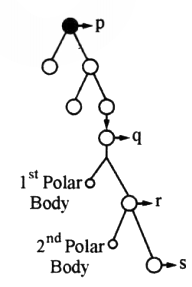
- a. p – Oogonia, q – Primary oocyte, r – Secondary oocyte, s – Ovum
- b. p – Ovum, q – Oogonia, r – Primary oocyte, s – Secondary oocyte
- c. p – Secondary oocyte, q – Primary oocyte, r – Ovum, s – Oogonia
- d. p – Ovum, q – Secondary oocyte, r – Primary oocyte, s – Ovum
Solution:
Answer: (a)
Question 47: Which of the following contraceptives could be effective in avoiding pregnancy if used within 72 hours after casual unprotected intercourse?
- a. Progestogen – Estrogen combination
- b. Androgen – FSH combination
- c. Testosterone – Relaxin combination
- d. Relaxin – Oxytocin combination
Solution:
Answer: (a)
Progestogen-estrogen combination prevents ovulation, changes the lining of the uterus and prevents implantation. Thus, administering progestogen- estrogen within 72 hours of coitus would be an effective contraceptive method.
Relaxin helps in the process of relaxing the pelvis and widening of the cervix during parturition.
Androgens are male sex hormones that are responsible for the secondary sexual characters in males. Testosterone is a type of androgen hormone.
FSH is a hormone released by the pituitary gland that stimulates the growth of follicles in the ovary in females and also regulates spermatogenesis in the male. Oxytocin is a hormone released by the pituitary gland and is responsible for contraction of the uterus during parturition.
Question 48: Choose the correct statement regarding the GIFT (Gamete Intrafallopian Tube Transfer) procedure.
- a. Ova are collected from a female donor and are transferred to the uterus of recipient
- b. Ova collected from a female donor are transferred to the fallopian tube to facilitate zygote formation in the recipient
- c. Zygote is collected from female donor and transferred to the fallopian tube of recipient
- d. Zygote is collected from a female donor and transferred to the uterus of recipient
Solution:
Answer: (b)
In GIFT, the gamete (ova) is collected from the female donor and is transferred into the fallopian tube. At the ampullary-isthmus junction of the fallopian tube, the fertilization process occurs.
If the embryo with more than eight blastomeres is transferred to the uterus of the mother or the surrogate mother, then this is called intrauterine transfer.
If the zygote (with up to 8 blastomeres) is transferred to the fallopian tube, then it is called the zygote intrafallopian transfer (ZIFT).
Question 49: Which of the following characters was not studied by Mendel in his pea plant experiments?
- a. Leaf shape
- b. Stem height
- c. Pod shape
- d. Seed shape
Solution:
Answer: (a)
Question 50: In an organism, mutation in a single gene exhibits multiple phenotypic expressions. Identify the underlying genetic mechanism in the above instance.
- a. Multiple allelism
- b. Pleiotropy
- c. Incomplete dominance
- d. Polygenic inheritance
Solution:
Answer: (b)
A single gene controlling various phenotypes is called pleiotropy. Phenylketonuria is a genetic disorder in which a base substitution occurs in chromosome 12 is affected. But it affects multiple systems such as brain development, decreased pigmentation and eczema. This is an example of pleiotropy.
If a single phenotype is controlled by several genes, then that type of inheritance is called polygenic inheritance. For example – the color of the skin is controlled by several genes.
When the dominant allele fails to completely dominate the recessive allele, the phenomenon is called incomplete dominance. Example: Pink flower color in snapdragon.
The phenomenon in which a gene which has more than two types of alleles is called multiple allelism. For example: The blood group has three different alleles (IA, IB and i).
Question 51: A pure breeding pea plant with round yellow seeds was crossed with a pea plant having wrinkled green seeds. On selfing of F1 hybrid of his cross, 64 progenies were obtained in the F2 generation. Find out the number of F2 progenies showing non-parental characters.
- a. 24
- b. 36
- c. 4
- d. 12
Solution:
Answer: (a)
The F2 phenotypic ratio in a dihybrid cross is 9:3:3:1. The first and last term in ratio i.e, 9 and 1 represent the parental genotypes while the second and third term i.e, 3 and 3 represent the recombinant genotypes. Therefore, the number of F2 progenies out of 64 progenies showing non-parental characters will be = (6 / 16) X 64 = 24.
Question 52: A man with blood group A marries a woman having blood group B. The maximum possible blood groups among their progenies are
- a. A, B, AB, O
- b. AB only
- c. A, B, AB
- d. A, B
Solution:
Answer: (a)
A woman with blood group A can have either of the genotypes – IAIO or IAIA. A man with a blood group B can have either of the genotypes – IBIO or IBIB. Since the given question doesn’t mention the specific genotype, thus any of the above-mentioned genotypes can be crossed. As a result of which there is a maximum possibility of obtaining all the blood groups (A, B, AB, O) among their progeny.
Question 53: The length of DNA helix in a typical nucleosome is
- a. 6.6 × 109 bp
- b. 200 bp
- c. 1000 bp
- d. 3.2 × 106 bp
Solution:
Answer: (b)
The DNA is wound around the histone proteins to form the nucleosome. The histone molecule is a complex made up of eight histone proteins – two molecules each of histones H2A, H2B, H3, and H4. In every nucleosome, around 200bp of DNA helix is wrapped around the histone octamer.
Question 54: Which of the following types of RNA carries amino acids towards the ribosome during translation?
- a. mRNA
- b. rRNA
- c. dsRNA
- d. tRNA
Solution:
Answer: (d)
RNA is a nucleic acid which is made up of a ribose sugar, nitrogenous bases (adenine, uracil, guanine and thymine) and phosphate group. Transcription of DNA strand results in the formation of mRNA. Messenger RNA or mRNA has the coding sequence which is required to produce the protein through the process of translation. Double-stranded RNA occurs in some viruses such as reovirus, wound tumor virus, etc.
The tRNA or transfer RNA is an adapter molecule which is meant for transferring amino acids to ribosomes for the synthesis of polypeptides. They have special sites onto which the amino acids can bind and are taken to the site of protein synthesis. rRNA or ribosomal RNA is the most abundant RNA found in a cell. The rRNA is a constituent of ribosomes.
Question 55: In eukaryotes, the entire base sequence of a gene does not appear in mature RNA because
- a. some gene sequences are removed by exonuclease
- b. transcription in eukaryotes consumes more energy
- c. coding sequences are removed during processing
- d. introns are removed during processing
Solution:
Answer: (d)
In prokaryotes, the DNA undergoes transcription and forms the mRNA. Whereas in eukaryotes the DNA undergoes transcription to form hn-RNA (heterogeneous RNA), which consists of coding (exons) and non-coding sequences (introns). Through the process of splicing the coding and non-coding sequences are separated. The exons are joined together using ligase enzymes. Now the resulting strand consists of only the coding sequence. The strand thus formed is called mRNA. Therefore, in eukaryotes, the entire base sequence of a gene does not appear in mature RNA due to loss of introns during the process of splicing.
Question 56: Suppose DNA samples collected for DNA fingerprinting analysis are less than the required quantity. Which of the following techniques is helpful to make the samples sufficient for above analysis?
- a. DNA probing
- b. Electrophoresis
- c. Chromatography
- d. PCR
Solution:
Answer: (d)
Question 57: When Escherichia coli cells are cultured in a medium where lactose is absent, the ‘i’ gene of Lac Operon continues to produce repressor mRNA, because it is
- a. a structural gene
- b. a non-coding gene
- c. an operator gene
- d. a constitutive gene
Solution:
Answer: (d)
The function of Lac Operon is to control the expression of genes for lactose metabolism. An operon consists of structural genes, operator gene, promoter gene and regulatory gene. The structural genes (lac z, lac y and lac a) code for enzymes responsible for permeability and metabolism of lactose.
The operator gene interacts with a protein molecule or regulatory molecule which prevents the transcription of structural genes.
The promoter gene has a site where RNA polymerase can attach so that the genes can be transcribed.
The regulatory gene produces a repressor protein. It is synthesized all the time from the ‘i’ gene.
Such genes that undergo transcription continuously are called constitutive genes. In the absence of the inducer (lactose) the repressor protein produced from the ‘i’ gene binds with the operator gene and inhibits the transcription of structural genes. In the presence of the inducer (lactose), the repressor binds with the inducer and does not bind with the operator gene. This results in the transcription of structural genes.
Question 58: For the given sequence of DNA, identify the complementary sequence of bases on its mRNA from the options given below:
DNA 3′ – ATGCATGCATGC – 5′
- a. 5′ – GCATGCATGCAT – 3′
- b. 5′ – UACGUACGUACG –3′
- c. 5′ – TACGTACGTACG – 3′
- d. 3′ – UACGUACGUACG –5′
Solution:
Answer: (b)
DNA undergoes transcription to form a complementary mRNA strand. The process of copying genetic information from the template strand of DNA into RNA is called transcription. The strand of DNA with polarity 3’ → 5’ serves as the template strand. The transcription starts from the 3’ end of the DNA and a new molecule of mRNA with 5’ → 3’ polarity is formed alongside the template strand. Since transcription results in the formation of mRNA, the complementary base to adenine would be uracil and not thymine. Thus, the correct sequence of the complementary mRNA strand would be
5′ – UACGUACGUACG –3′
Question 59: Which among the following was the biggest land dinosaur?
- a. Triceratops
- b. Stegosaurus
- c. Tyrannosaurus rex
- d. Brachiosaurus
Solution:
Answer: (c)
Among the following, Tyrannosaurus rex was the biggest land dinosaur. One of the largest fossils of this species measures up to 42 feet with a weight of about 14-15 metric tons.
Stegosaurus was a herbivorous dinosaur that measured around 23-40 feet in length and weighed around 5-7 metric tons.
Triceratops were also herbivorous dinosaurs that measured around 26 to 30 feet in length and weighed around 6-12 metric tons.
Question 60: In a population of plants, some were extremely tall and the remaining were extremely dwarf. No plants of the population showed intermediate height. The type of operation of natural selection in the above case is
- a. disruptive
- b. balancing
- c. directional
- d. Stabilizing
Solution:
Answer: (a)
In the population of plants, tall and dwarf are the extreme phenotypes and medium height is the intermediate phenotype. When nature selects the extreme phenotypes, the population is said to be disruptive. Here most of the members with intermediate height will be eliminated. If the intermediate phenotype is chosen then the population is said to be stabilizing. The directional selection is also called balancing selection. If either of the extreme phenotypes is selected by nature then the population is directional. This means that in this type of selection, nature can favor tall or dwarf individuals and more individuals of that type will be present in the next generation.
Request call back
- KCET 2019 Physics Paper with Solutions
- KCET 2019 Chemistry Paper with Solutions
- KCET 2019 Maths Paper with Solutions
- KCET 2019 Biology Paper with Solutions
- KCET 2020 Chemistry Paper with Solutions
- KCET 2020 Physics Paper
- KCET 2020 Biology Paper with Solutions
- KCET 2020 Mathematics Questions Paper
- KCET Biology Examination 2021 Paper
- KCET – 2021 TEST PAPER
- IISER MOCK TEST – 4
- IISER MOCK TEST – 3
- IISER MOCK TEST – 2
- IISER MOCK TEST – 1
- KCET Mathematics- 2021 Test Paper
- KCET Chemistry – 2021 TEST PAPER
- KCET Physical – 2021 TEST PAPER
- KCET Biology Examination 2021 Paper
- KCET 2020 Mathematics Questions Paper
- KCET 2020 Biology Paper with Solutions
- KCET 2020 Physics Paper
- KCET 2020 Chemistry Paper with Solutions
- KCET 2019 Biology Paper with Solutions
- KCET 2019 Chemistry Paper with Solutions
- KCET 2019 Maths Paper with Solutions


